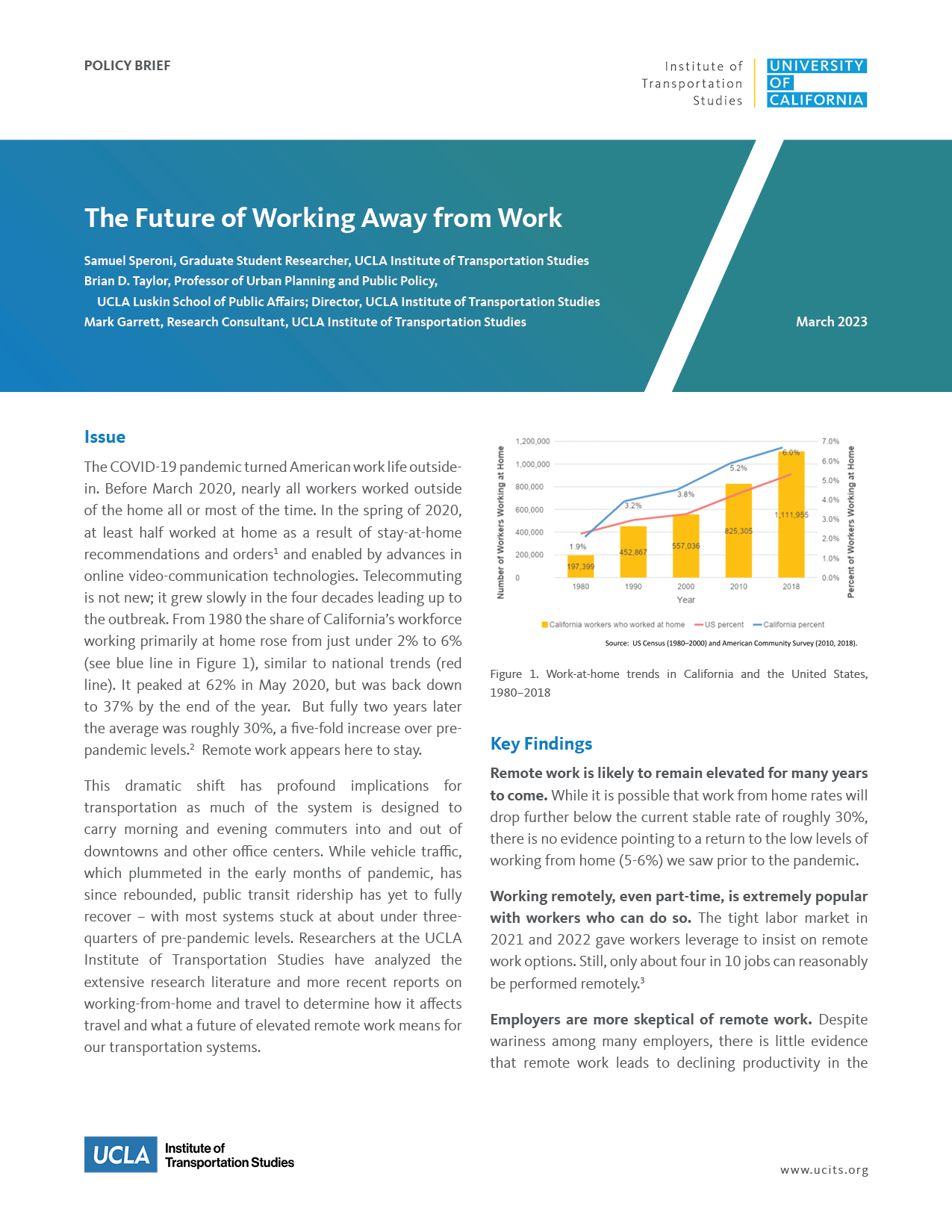Date: March 14, 2023
Author(s): Samuel Speroni, Brian D. Taylor, Mark Garrett
Abstract
The COVID-19 pandemic turned American work life outside-in. Before March 2020, nearly all workers worked outside of the home all or most of the time. In the spring of 2020, at least half worked at home as a result of stay-at-home recommendations and orders and enabled by advances in online video-communication technologies. Telecommuting is not new; it grew slowly in the four decades leading up to the outbreak. From 1980 the share of California’s workforce working primarily at home rose from just under 2% to 6%, similar to national trends. It peaked at 62% in May 2020, but was back down to 37% by the end of the year. But fully two years later the average was roughly 30%, a five-fold increase over pre-pandemic levels. Remote work appears here to stay.
About the Project
Prior to the COVID-19 pandemic, about five percent of the U.S. labor force worked primarily from home. Between February and April of 2020, the share of the labor force working from home skyrocketed to well over 50 percent in response to public health orders to contain the pandemic. While no one expects the share of those working from home to stay at such high levels as the pandemic recedes, there is considerable debate among experts on just how many workers will return full-time to employment sites. This research will review the well-established and substantial pre-pandemic literature on working from home and travel as well as the nascent but rapidly growing literature on working from home and travel in the COVID-19 pandemic to offer insights on the future of home/work location choices, commuting, and transportation mode usage, likely through the presentation of plausible future location/travel scenarios and their policy implications.


